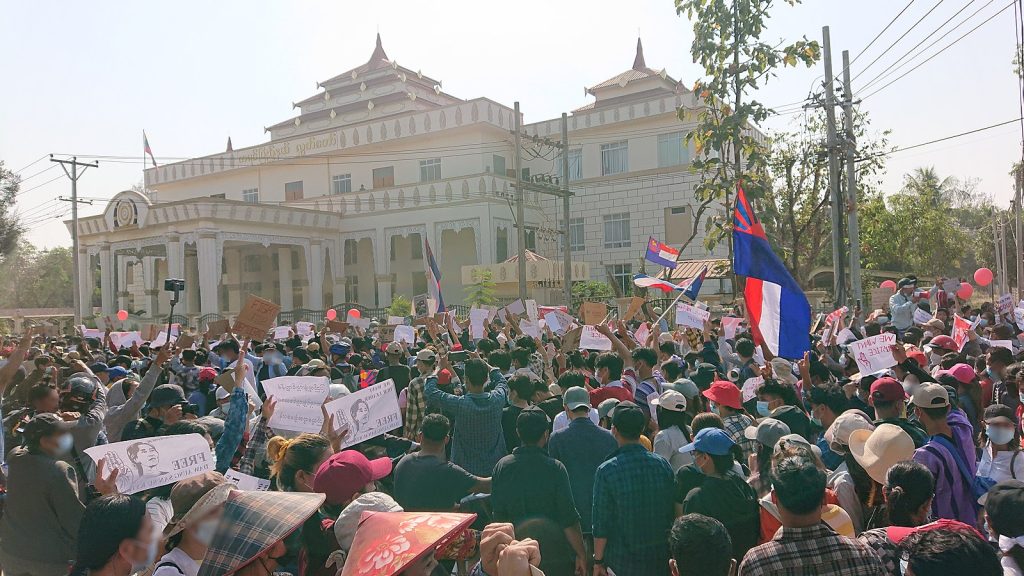
Myanmar, also known as Burma, is in a military imposed crisis. Following the November 2020 general election, won by the National League of Democracy Party (NLD), the armed forces demanded a recount and claimed widespread fraud. (This is eerily reminiscent of certain recent events in the United States.) The leader of the NLD party, Aung San Suu Kyi, has had several charges filed against her accusing her of rigging the election; she has been detained and the power of the country has been given to commander-in-chief Gen Min Aung Hlaing.
The would-be leader Aung San Suu Kyi began her work as a revolutionary, aiming to restore democracy in the country, and spent nearly 15 years in detention from 1989 for organising rallies which called for democratic reform. The NLD leader came into power in 2015 and recently won the general election in November 2020.
However since her protest days, she has fallen from grace, actively defending the military for their part in the genocide of the Rohingya ethnic minority in Myanmar. Despite this, she still won the 2020 election by a landslide. It is perhaps iconic then, that the very people she has defended, the military, have now arrested her. The military, unhappy with the country’s transition to democracy, have reclaimed power and begun to impose restrictions upon the people of Myanmar, including curfews and limits to gatherings.
During a coup, the former leader was detained by the military, as well as many other NLD officials. Since this event on February 1, internet services have been cut and news channels taken off the air, leaving the Myanmar people isolated. The military have justified their actions by telling the people that Suu Kyi committed voter fraud and stated that this is the only reason that she beat the military-backed opposition party in the November election. She has since been charged with the possession of illegally imported walkie-talkies. The military in Myanmar were already extremely wealthy, controlling many of the country’s industries including tourism, banking, tobacco, beer, and transport to name only a few. The power they hold in the country meant it was easy for them to take control.
As you can imagine, the residents of Myanmar are less than happy with this decision, leading to mass protests all across the country. The residents also held a nationwide strike to show their objection to the military take-over, with even civil-servant professionals walking out of their work. It seems that members from every community have come out to protest, showing the united front seeking to put an end to military rule.
In the protests so far, we have seen civil servants, LGBTQ+ communities, a “princess protest” demonstrating that young women are getting involved in the protest too, and Gen Z protestors. Tens of thousands have taken to the streets to demand the release of their leader and for the restoration of democracy.
As expected, all too familiar scenes of police fighting these peaceful protestors with ‘rubber’ bullets and water cannons have been seen on the streets. However, some police have protested alongside the cause, standing with the protestors, even trying to protect the civilians from other police officers. These scenes are very different to protests seen before in Myanmar from earlier generations, as the people protesting today have experienced living in a democracy and therefore want their freedom back.
How are the rest of the world responding?
The United Nations have asked members of the military in Myanmar to respect the people’s right to protest peacefully. They have said that the use of force against protestors is unacceptable. The UK, the EU and Australia have also condemned the military takeover. The US has reviewed their assistance to Myanmar and called for the military to release those they have detained and to refrain from violence. The US has also imposed sanctions upon leaders of the coup, including Gen Min Aung Hlaing.
It is evident that everybody, that is except Myanmar’s military authorities, wants the same thing for Myanmar and its people: democracy. These protests are the largest seen here in nearly a decade, showing the political unrest the people in Myanmar are experiencing. Since the protests began, more than 350 have been arrested, including activists, monks and officials.
